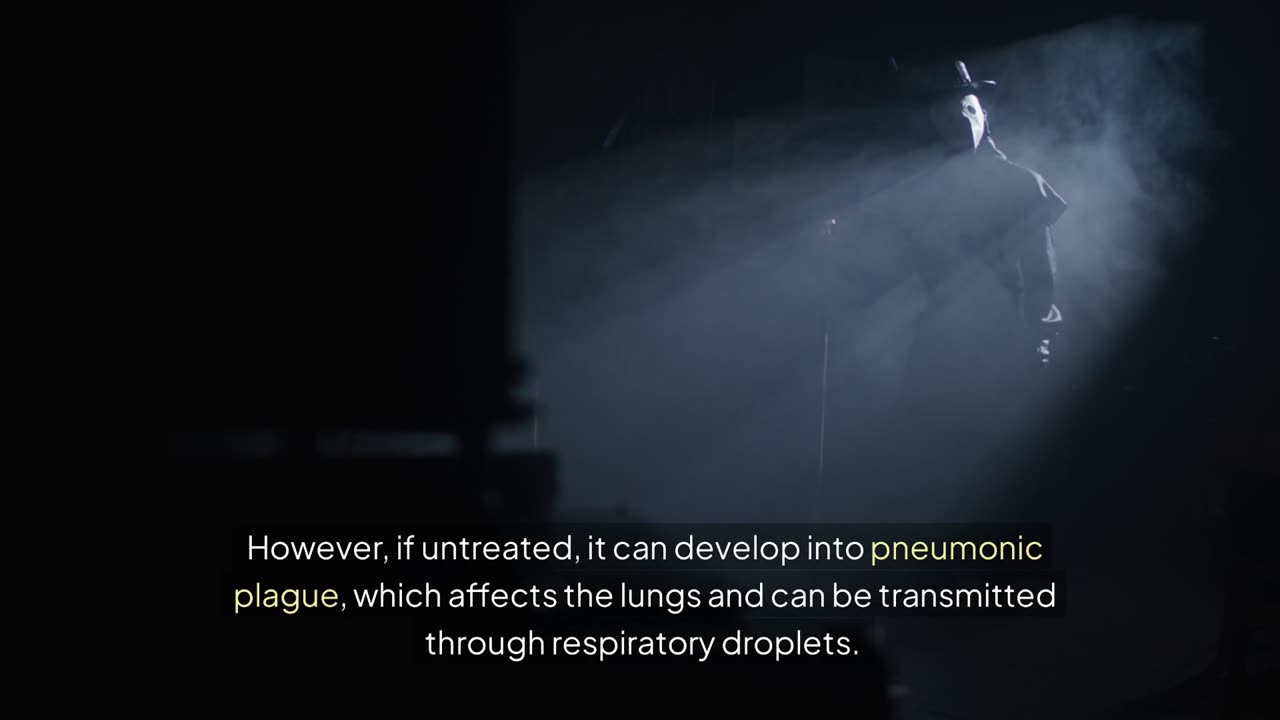Premium Only Content

The Lingering Shadow of the Black Death: Plague in Modern America
# The Lingering Shadow of the Black Death: Plague in Modern America
A Medieval Nightmare in Modern Times
When Colorado officials confirmed a new case of bubonic plague in Pueblo County, it served as a stark reminder that this ancient scourge is still very much alive. While the plague no longer decimates populations as it did during the Black Death, it continues to pose a serious health risk in parts of the United States. How does a disease from the Middle Ages persist in today’s world, and what does this mean for us? This article explores the current state of the plague in America and the historical context that keeps it relevant.
## Chapter 1: The Black Death's Haunting Legacy
### The Historical Catastrophe
The Black Death, which swept through Europe and Asia in the 14th century, killed an estimated 50 million people, wiping out more than a quarter of Europe’s population. This pandemic, driven by the Yersinia pestis bacterium carried by fleas on rats, left a lasting mark on history. It decimated entire communities and altered the course of civilization. While modern sanitation and antibiotics have mitigated its impact, the plague's persistence in the western United States is a reminder of its enduring threat.
### Plague in the Modern Era
Today, the plague no longer spreads unchecked through dense, unsanitary urban centers. However, it remains endemic in certain rural and semi-rural areas, particularly in the American Southwest. The disease primarily affects those who come into contact with infected rodents or their fleas, making it a recurring but containable threat.
## Chapter 2: The Plague's Path to America
### Arrival and Spread
The plague made its way to America in the early 1900s, carried by rats aboard ships arriving at port cities like San Francisco and Honolulu. These early outbreaks were marked by panic and prejudice, with public health responses often targeting marginalized communities. For instance, during an outbreak in San Francisco, Chinese immigrants were wrongfully blamed and subjected to harsh quarantines and destruction of their homes.
### Retreat to the West
From these coastal cities, the plague retreated to the interior western United States, where it found a new reservoir in local rodent populations such as prairie dogs and squirrels. Today, these rodents continue to harbor the Yersinia pestis bacterium, ensuring that the plague remains a persistent threat in these regions.
## Chapter 3: The Plague Today: Current Cases and Risks
### Recent Incidents
Despite advances in public health, the plague infects a handful of Americans each year. In 2023, three cases were reported: a fatal incident in New Mexico in March, an infection in Oregon in February likely transmitted by a cat, and the recent case in Colorado. These incidents highlight the ongoing risk, particularly in areas where humans and wildlife intersect.
### Symptoms and Treatment
Plague symptoms typically appear within one to seven days of exposure and include sudden fever, chills, severe headache, muscle aches, nausea, and vomiting. Bubonic plague, the most common form, is characterized by swollen lymph nodes, or buboes, which give the disease its name. Early treatment with antibiotics is highly effective, but prompt diagnosis is crucial.
## Chapter 4: The Battle Against Plague
### Public Health Measures
Public health officials have developed strategies to mitigate the risk of plague. These include controlling rodent populations, treating pets for fleas, and educating the public about avoiding contact with potentially infected animals. In Colorado, for example, officials have advised residents to destroy rodent habitats near their homes and to keep pets away from areas where rodents live.
### Research and Surveillance
Ongoing research is essential to understanding and controlling the plague. Surveillance of rodent populations and flea activity helps predict and prevent outbreaks. Additionally, advancements in genetic research may one day provide more effective vaccines or treatments.
## Chapter 5: Historical Lessons and Modern Precautions
### The Importance of Awareness
The history of the plague teaches us valuable lessons about public health, societal responses to disease, and the importance of scientific advancements. Despite its reduced impact, the plague remains a serious disease that requires continued vigilance. Modern medicine and public health infrastructure have significantly lowered the risks, but awareness and preparedness are key to preventing outbreaks.
### Staying Safe
Residents in areas where the plague is endemic should take precautions seriously. Avoiding contact with rodents, keeping pets flea-free, and being aware of symptoms can help reduce the risk of infection. Public health messages continue to emphasize these points, aiming to prevent the spread of this ancient disease in a modern world.
## Conclusion: A Persistent Threat
The case of plague in Colorado is a reminder that while we have made tremendous strides in combating infectious diseases, some threats from the past still linger. The plague may no longer be the fearsome pandemic it once was, but it remains a part of our world, especially in the western United States. By understanding its history, recognizing the risks, and taking appropriate precautions, we can continue to live safely alongside this ancient adversary.
Thank you for reading! If you found this article informative, please share it with your friends and family. Don’t forget to subscribe to our channel for more updates, like this post, and leave your thoughts in the comments below. Together, we can stay informed and protect our communities from ongoing health threats.
-
 LIVE
LIVE
Rallied
7 hours ago $1.15 earnedWARZONE SOLO CHALLENGES ALL DAY
12,178 watching -
 LIVE
LIVE
StoneMountain64
3 hours agoBattlefield 6 Favorite Weapons, Vehicles, and Strategies
2,676 watching -
 1:10:03
1:10:03
Michael Franzese
12 hours agoWhy do we allow incompetent people in government decide our lives?
29K39 -
 1:33:49
1:33:49
MattMorseTV
5 hours ago $1.49 earned🔴Trump has a NEW DEAL.🔴
54.3K56 -
 2:55:27
2:55:27
Mally_Mouse
9 hours agoSpicy HYDRATE Saturday! -- Let's Play!
36.1K4 -
 1:38:06
1:38:06
GameWithV
3 hours ago $0.01 earnedSaturday Play
9.63K1 -
 LIVE
LIVE
Spartan
4 hours agoHalo for a bit, Octopath after maybe
267 watching -
 2:58:09
2:58:09
SavageJayGatsby
5 hours agoSpicy Saturday with Mally! - Wedding in 2 Months!
29.2K1 -
 1:47:14
1:47:14
VapinGamers
7 hours ago $0.60 earnedTools of the Trade - Does Production Matter? with Tim the Tool Man from Louder with Crowder
17.8K2 -
 LIVE
LIVE
BSparksGaming
5 hours agoHappy Saturday! Battlefield 6 Beta! PS5 Gameplay
77 watching